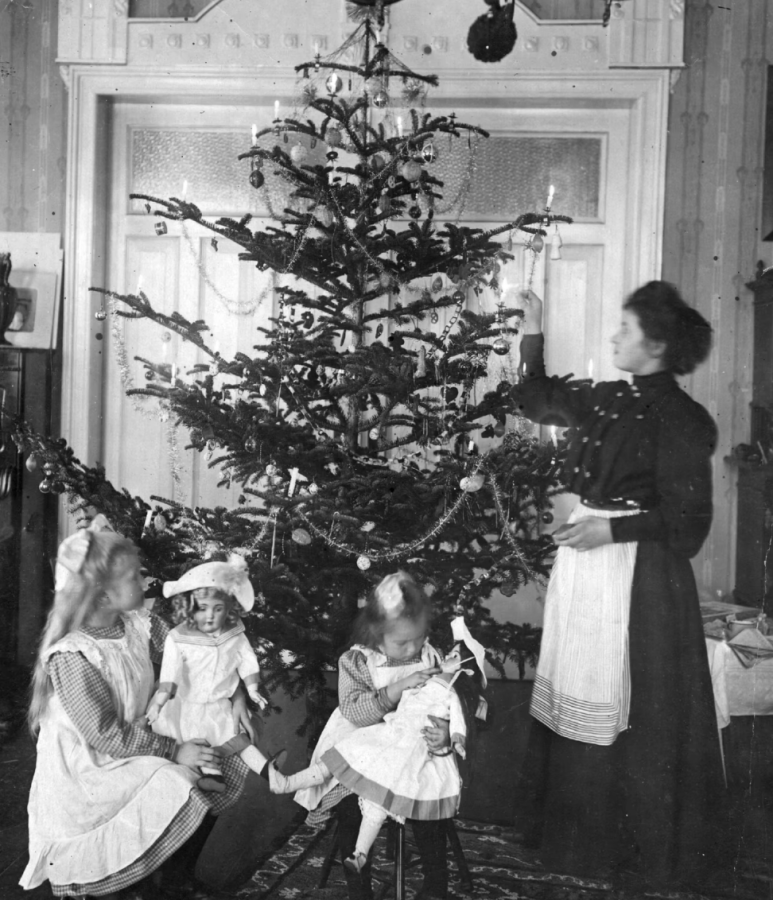The History of Christmas
Ah yes, Christmas, the day when you wake up early, eager to sift through the presents you received from Old Saint Nick. As you open your gifts, have a cup of eggnog, and watch the snow pile up on your lawn, have you ever wondered about the origins of the jolly holiday?
During Christmas’s long history, the holiday has persevered through many hardships. To start, Christmas was canceled in the early 17th century. When a wave of religious reform took over Europe in 1645, Puritans vowed to rid England of decadence and called off Christmas, though it was later restored by King Charles II. Then, Puritans arrived in America and outlawed Christmas again in Boston due to ill feelings towards England. Surprisingly, Christmas did not become an official holiday until June 26, 1870.
In the two millennia history of the holiday, Christmas has been celebrated in many different forms, depending on different cultures. The Winter Solstice was celebrated in Scandinavia, where men of the household would bring in massive logs to burn. People would feast on a lavish dinner until the log burned out, which could last twelve days. Romans, however, celebrated this holiday very differently. Called Saturnalia, Romans would give each other gifts such as candles, dice, toys for young children, and gag gifts for adults. In addition to the presents, masters and slaves would switch roles, and schools and businesses would close. Instead of going to work, ancient Romans would gamble, sing, play music, and socialize.
For early Christians, Easter had been the most prominent holiday. However, Pope Julius I wanted to celebrate the birth of Christ as well, choosing December 25 as the date and incorporating Saturnalia traditions into it. In the early days of Christmas, believers would attend church and, afterward, partake in a drunken festival similar to today’s Mardi Gras. Christmas was the time when the wealthy could repay society by entertaining the less fortunate. The poor would eat dinner at the homes of the rich, enjoying the best food and drinks. If owners failed to accommodate them, the poor were permitted to terrorize them. Americans reinvented this holiday in the 19th century by changing it from an inebriated carnival to a family-oriented day of peace and comfort.
The story of Santa Claus specifically can be traced back to 280 AD in Turkey when a monk named St. Nicholas gave all his wealth to the poor and traveled the countryside helping the less fortunate. In fact, there was an entire feast dedicated to him on the anniversary of his death, December 6th. Over many years, the story of St. Nicholas spread across Europe and, eventually, the entire globe. Nicholas made his way to American culture when immigrant Dutch families gathered to honor his death, which was covered by New York newspaper articles. In the early 19th century, stores began to profit from his story by using him in advertisements for Christmas shopping. Newspaper articles then took the original St. Nicholas and created a bearded, chubby, rosy-faced old man to embody the Christmas holiday shopping craze. The character drew a lot of attention, with thousands of children flooding a Philadelphia mall to see a life-size model of the newly created Santa Claus.
This jolly holiday has been around for centuries, though each culture slightly tailored it to match their values. Scandivanians made Christmas a season to feast luxuriously with family, Romans a week to give gifts and repay servants, early Christians as a day to drink and feed the poor, and modern Americans as a morning to spend with family and God.

Ponthea is a senior returning for her fourth year at the Banner. You can find Ponthea hanging out with friends, In the library, walking around school...


